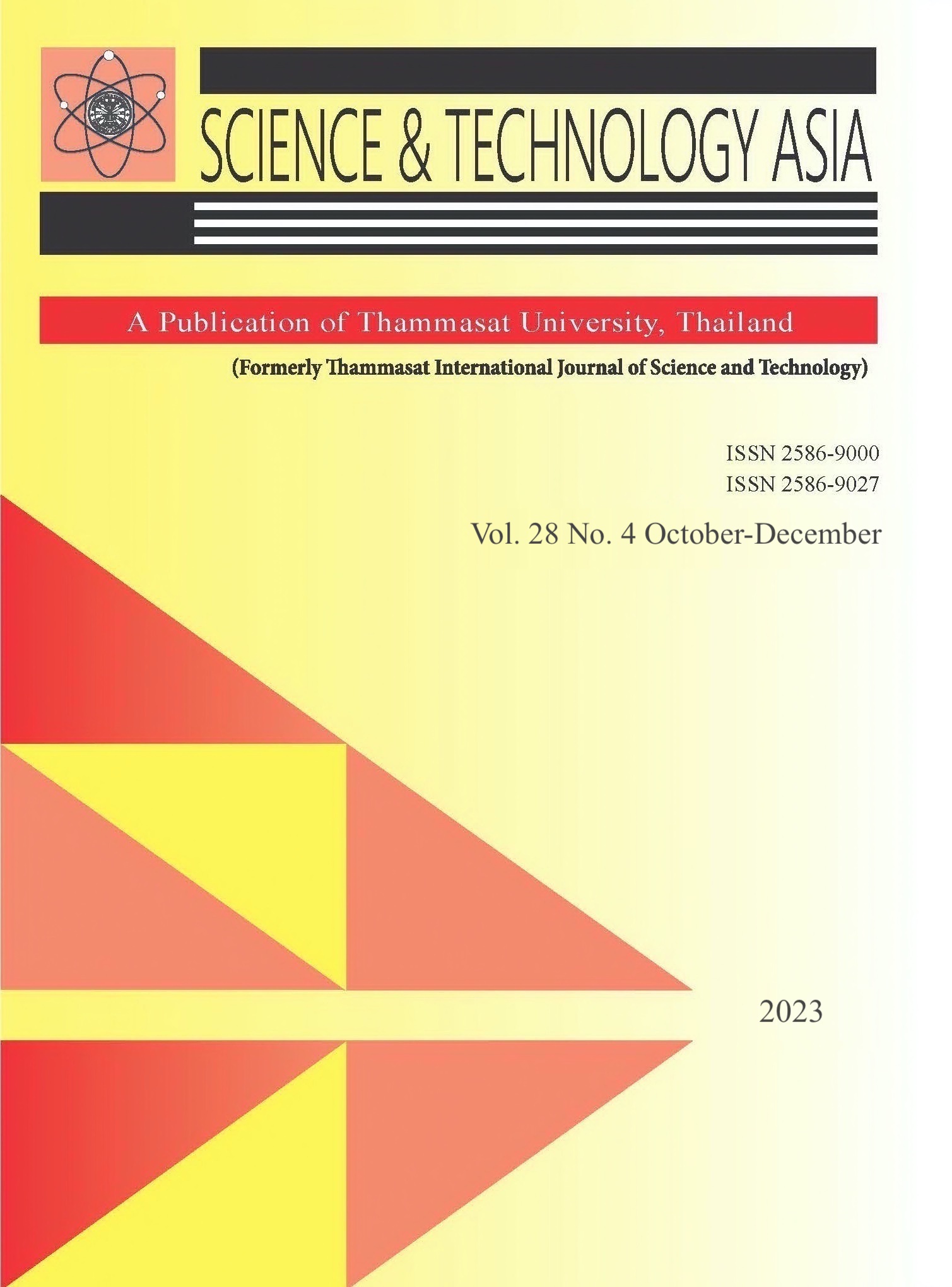A New Diagnosis of Nonvalvular Atrial Fibrillation in Ischemic Stroke Patients Admitted to Stroke Unit: a Conceptual Replication Study
Main Article Content
Abstract
Ischemic stroke constitutes a significant morbidity and mortality source, with atrial fibrillation (AF) identified as a leading contributory factor. Particularly, nonvalvular AF presents diagnostic challenges due to its intermittent and often asymptomatic nature. Understanding the prevalence and detection patterns of AF associated with stroke is paramount for efficacious therapeutic interventions. In an observational study conducted at the Neurological Institute of Thailand's stroke unit, 549 acute ischemic stroke patients underwent ECG monitoring. The data revealed a 15.5% incidence of AF, bifurcated into 8.0% previously diagnosed and 7.5% newly diagnosed cases. Of the latter, 41.7% were detected through continuous ECG monitoring, with a detection time spanning from 18 minutes to 17 days during admission, emphasizing a median detection interval of approximately 2.29 days. Given the findings, we advocate for an extended continuous ECG monitoring duration of 2-3 days in specialized stroke units, aligning with previous research and augmenting precision in secondary stroke prevention modalities.
Article Details

This work is licensed under a Creative Commons Attribution-NonCommercial-NoDerivatives 4.0 International License.
References
Feigin VL, Stark BA, Johnson CO, et al. Global, regional, and national burden of stroke and its risk factors, 1990–2019: a systematic analysis for the Global Burden of Disease Study 2019. The Lancet Neurology 2021;20(10):795-820. DOI: 10.1016/s1474-4422(21)00252-0.
Hanchaiphiboolkul S, Poungvarin N, Nidhinandana S, et al. Prevalence of stroke and stroke risk factors in Thailand: Thai Epidemiologic Stroke (TES) Study. J Med Assoc Thai 2011;94(4):427-36. (In eng) (http://www.ncbi.nlm.nih.gov/entrez/query.fcgi?cmd=Retrieve&db=PubMed&dopt=Citation&list_uids=21591527).
Lippi G, Sanchis-Gomar F, Cervellin G. Global epidemiology of atrial fibrillation: An increasing epidemic and public health challenge. Int J Stroke 2021;16(2):217-221. DOI: 10.1177/1747493019897870.
Bhumimuang K. Atrial Fibrillation: Cardiologist perspective. J Thai Stroke Soc 2014;13(3):62-8.
Samuthpongtorn C, Jereerat T, Suwanwela NC. Stroke risk factors, subtypes and outcome in elderly Thai patients. BMC Neurology 2021;21(1). DOI: 10.1186/s12883-021-02353-y.
Muengtaweepongsa S, Prapa-Anantachai P, Dharmasaroja P. Not only the Sugar, Early infarct sign, hyperDense middle cerebral artery, Age, Neurologic deficit score but also atrial fibrillation is predictive for symptomatic intracranial hemorrhage after intravenous recombinant tissue plasminogen activator. Journal of Neurosciences in Rural Practice 2017;8(1):49-54. (Article) (In English). DOI: 10.4103/0976-3147.193548.
Fauchier L, Philippart R, Clementy N, et al. How to define valvular atrial fibrillation? Archives of Cardiovascular Diseases 2015;108(10):530-539. DOI: https://doi.org/10.1016/j.acvd.2015.06.002.
Margulescu AD, Mont L. Persistent atrial fibrillation vs paroxysmal atrial fibrillation: differences in management. Expert review of cardiovascular therapy 2017;15(8):601-618.
Sposato LA, Cerasuolo JO, Cipriano LE, et al. Atrial fibrillation detected after stroke is related to a low risk of ischemic stroke recurrence. Neurology 2018;90(11):e924-e931.
Friberg L, Rosenqvist M, Lindgren A, Terent A, Norrving B, Asplund K. High prevalence of atrial fibrillation among patients with ischemic stroke. Stroke 2014;45(9):2599-605. DOI: 10.1161/STROKEAHA.114.006070.
Friberg L, Hammar N, Rosenqvist M. Stroke in paroxysmal atrial fibrillation: report from the Stockholm Cohort of Atrial Fibrillation. Eur Heart J 2010;31(8):967-75. DOI: 10.1093/eurheartj/ehn599.
Rizos T, Wagner A, Jenetzky E, et al. Paroxysmal Atrial Fibrillation Is More Prevalent than Persistent Atrial Fibrillation in Acute Stroke and Transient Ischemic Attack Patients. Cerebrovascular Diseases 2011;32(3):276-282. DOI: 10.1159/000330348.
Kishore A, Vail A, Majid A, et al. Detection of Atrial Fibrillation After Ischemic Stroke or Transient Ischemic Attack. Stroke 2014;45(2):520-526. DOI: 10.1161/strokeaha.113.003433.
Lazzaro MA, Krishnan K, Prabhakaran S. Detection of atrial fibrillation with concurrent holter monitoring and continuous cardiac telemetry following ischemic stroke and transient ischemic attack. J Stroke Cerebrovasc Dis 2012;21(2):89-93. (In eng). DOI: 10.1016/j.jstrokecerebrovasdis.2010.05.006.
Langhorne P. The Stroke Unit Story: Where Have We Been and Where Are We Going? Cerebrovascular Diseases 2021;50(6):636-643. DOI: 10.1159/000518934.
Tantirittisak T. Standard Stroke Center Certification (SSCC). (http://neurothai.org/content.php?id=367).
Powers William J, Rabinstein Alejandro A, Ackerson T, et al. Guidelines for the Early Management of Patients With Acute Ischemic Stroke: 2019 Update to the 2018 Guidelines for the Early Management of Acute Ischemic Stroke: A Guideline for Healthcare Professionals From the American Heart Association/American Stroke Association. Stroke 2019;50(12):e344-e418. DOI: 10.1161/STR.0000000000000211.
Tantirittisak T, Theeravaoravong T. Clinical Practice Guidelines for Ischemic Stroke: Tana Press, 2019.
Suissa L, Lachaud S, Mahagne MH. Optimal Timing and Duration of Continuous Electrocardiographic Monitoring for Detecting Atrial Fibrillation in Stroke Patients. Journal of Stroke and Cerebrovascular Diseases 2013;22(7):991-995. DOI: https://doi.org/10.1016/j.jstrokecerebrovasdis.2012.01.015.
Sutamnartpong P, Dharmasaroja PA, Ratanakorn D, Arunakul I. Atrial Fibrillation and Paroxysmal Atrial Fibrillation Detection in Patients with Acute Ischemic Stroke. Journal of Stroke and Cerebrovascular Diseases 2014;23(5):1138-1141. DOI: https://doi.org/10.1016/j.jstrokecerebrovasdis.2013.09.032.
Thijs V. Atrial Fibrillation Detection. Stroke 2017;48(10):2671-2677. DOI: 10.1161/strokeaha.117.017083.
Healey JS, Connolly SJ, Gold MR, et al. Subclinical Atrial Fibrillation and the Risk of Stroke. New England Journal of Medicine 2012;366(2):120-129. DOI: 10.1056/nejmoa1105575.
Bhana I, Ojha A, Pandey RK, Singh D, Chourasiya M. Prevalence of Atrial Fibrillation in Patients with Acute Ischemic Stroke: A Multicentric Cohort Study. Journal of Clinical & Diagnostic Research 2021;15(9):21-24. (Article). DOI: 10.7860/JCDR/2021/49603.15439.
Mayet M, Vallabh K, Hendrikse C. Low prevalence of atrial fibrillation in ischaemic stroke: Underestimating a modifiable risk factor. African Journal of Emergency Medicine 2021;11(1):39-45.
Kirchhof P, Benussi S, Kotecha D, et al. 2016 ESC Guidelines for the management of atrial fibrillation developed in collaboration with EACTS. Eur J Cardiothorac Surg 2016;50(5):e1-e88. (In eng). DOI: 10.1093/ejcts/ezw313.
Higgins P, Macfarlane PW, Dawson J, McInnes GT, Langhorne P, Lees KR. Noninvasive Cardiac Event Monitoring to Detect Atrial Fibrillation After Ischemic Stroke. Stroke 2013;44(9):2525-2531. DOI: 10.1161/strokeaha.113.001927.


